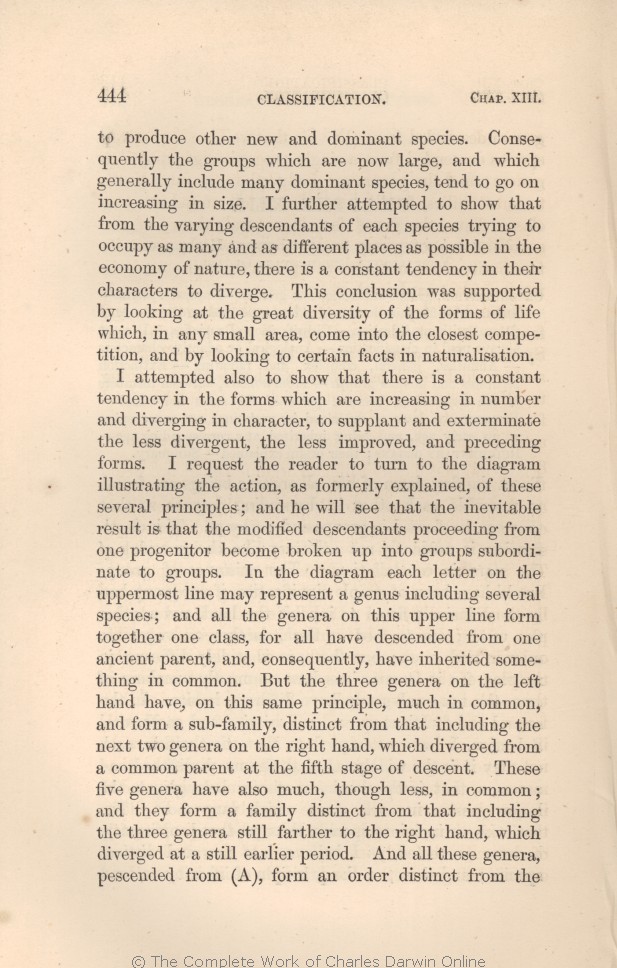I attempted also to show that there is a
constant | constant 1859 1860 1861 1866 1869 | | steady 1872 |
| less divergent, the 1859 1860 1861 |
| preceding, less divergent and 1866 1869 1872 |
| improved, 1859 1860 1861 | | improved 1866 1869 1872 |
| and preceding 1859 1860 1861 | and preceding 1866 1869 1872 |
| is 1859 1860 1861 1866 1869 | | is, 1872 |
| all 1859 1860 1861 1866 | all 1869 1872 |
| genera on this 1859 1860 1861 1866 |
| whole of the genera along this upper 1869 1872 |
| upper line 1861 1866 | | line 1859 1860 1869 1872 |
| have 1859 1860 1861 1866 | | are 1869 1872 |
| ..... 1861 1866 1869 1872 | | but unseen 1859 1860 |
| parent, 1859 1860 1861 1866 | | parent 1869 1872 |
| including 1859 1860 1861 1866 1869 | | containing 1872 |
| much, 1859 1860 1861 1866 1869 | | much 1872 |
| though less, in common; 1859 1860 1861 1866 1869 |
| in common, though less than when grouped in sub-families; 1872 |
| including 1859 1860 1861 1866 1869 | | containing 1872 |
| farther 1861 1866 1869 1872 | | further 1859 1860 |
| a still 1859 1860 1861 1866 1869 | | an 1872 |
| pescended 1861 | | descended 1859 1860 1866 1869 1872 |
|









